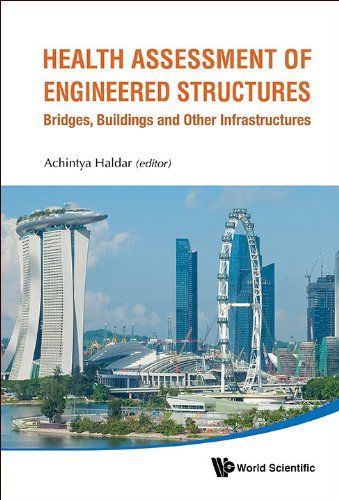
Health Assessment of Engineered Structures Bridges, Buildings and Other Infrastructures
Health Assessment of Engineered Structures has become one of the most active research areas and has attracted multi-disciplinary interest. Since available financial recourses are very limited, extending the lifespan of existing bridges, buildings and other infrastructures has become a major challenge to the engineering profession world-wide. Some of its related areas are only in their development phase. As the study of structural health assessment matures, more new areas are being identified to complement the concept. This book covers some of the most recent developments (theoretical and experimental) and application potentials in structural health assessment. It is designed to present currently available information in an organised form to interested parties who are not experts in the subject. Each chapter is authored by the most active scholar(s) in the area. After discussing the general concept, various currently available methods of structural health assessment (such as the use of smart sensors) are presented. Health Assessment discusses the following: sensor types, platforms and data conditioning for practical applications; wireless collection of sensor data, sensor power needs and on-site energy harvesting; and long term monitoring of structures. Uncertainty in collected data is also extensively addressed. A chapter discussing future directions in structural health assessment is also included. Contents:Structural Health Monitoring for Civil Infrastructure (E J Cross, K Worden and C R Farrar)Enhanced Damage Locating Vector Method for Structural Health Monitoring (S T Quek, V A Tran, and N N K Lee)Dynamics-Based Damage Identification (Pizhong Qiao and Wei Fan)Simulation Based Methods for Model Updating in Structural Condition Assessment (H A Nasrellah, B Radhika, V S Sundar, and C S Manohar)Stochastic Filtering in Structural Health Assessment: Some Perspectives and Recent Trends (S Sarkar, T Raveendran, D Roy, and R M Vasu)A Novel Health Assessment Method for Large Three Dimensional Structures (Ajoy Kumar Das and Achintya Haldar)Wavelet-Based Techniques for Structural Health Monitoring (Z Hou, A Hera, and M Noori)The HHT Based Structural Health Monitoring (Norden E Huang, Liming W Salvino, Ya-Yu Nieh, Gang Wang and Xianyao Chen)The Use of Genetic Algorithms for Structural Identification and Damage Assessment (C G Koh and Z Zhang)Health Diagnostics of Highway Bridges Using Vibration Response Data (Maria Q Feng, Hugo C Gomez, and Andrea Zampieri)Sensors Used in Structural Health Monitoring (Mehdi Modares and Jamshid Mohammadi)Sensor Data Wireless Communication, Sensor Power Needs, and Energy Harvesting (Erdal Oruklu, Jafar Saniie, Mehdi Modares, and Jamshid Mohammadi) Readership: Students (undergraduate and graduate), researchers (academic and industrial), and practitioners (government and private) interested in structural engineering. Keywords:Structural Health Assessment;Methodologies;Sensors;Wireless Sensors;Uncertainty Analysis;System IdentificationKey Features:No such book is currently available, it is one of the most active research and development areas in the engineering profession at present and each chapter will be authored by the most active scholar(s) on the subject